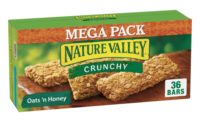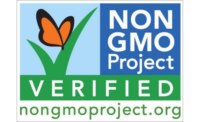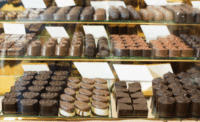In today’s marketplace, consumers path to purchase is evolving quickly. In response to COVID, consumers now make fewer trips to the grocery store, fill larger baskets, seek less contact and are forcing a massive shift to digital.
While experts argue this evolution was happening pre-pandemic, what should have taken five years happened in five months – leaving candy manufacturers scrambling to keep up and improve manufacturing practices to match new consumer purchasing patterns. The shift to online grocery significantly impacts one of the ways confectioneries has traditionally been sold — as an impulse product at the checkout.
Given these market evolutions, flavor innovation alone in the candy sector isn’t enough to sustain consumer interest. Shoppers are paying closer attention than ever to packaging and production claims in categories across the store, including confectionery. Sustainability throughout the manufacturing process is now playing a meaningful role in consumer choice.
To answer this trend, brands and retailers have elevated their environmental practices and corporate goals to address sustainability sourcing, package and food waste, reduction of water and energy resources, their carbon footprints and other environmental issues, according to the National Candy Association’s “State of Treat” report.
The report reveals that these platforms are important to about four in 10 confectionery shoppers – especially younger ones: More than half of Gen Z consumers said confectionery brands engaging in waste-focused initiatives (reduced packaging, biodegradable packaging, etc.) influences their purchasing decisions.
In this consumer demand-driven packaging market, many candy makers have seen the need to invest in packaging innovations and implement sustainability initiatives in their production and packaging lines, according to the State of the Industry – U.S. Packaging Machinery report from PMMI Business Intelligence, part of PMMI, The Association for Packaging and Processing Technologies. Machine modifications or adjustments are needed to achieve these sustainability goals. That said, some of the challenges candy makers face when moving to more sustainable packaging require exploring equipment application details.
Some examples include:
- Secondary packaging machines such as conveyors must be able to handle material reduction strategies, including lightweight corrugated.
- Machines need to run different style boxes to accommodate sustainability strategies, such as using the right size box. Case packers with a smaller footprint can help achieve sustainability goals through a reduction in energy usage.
- A more efficient process of unpacking the contents of a pallet and repacking them into different sizes or variety packs is needed with the focus on reducing material usage.
As the PMMI report points out, sustainability is becoming the new business reality, and the confectionery industry is looking at flexible packaging as one weapon in the arsenal of innovating toward it.
Traditionally, flexible packaging faced challenges in meeting the needs of modern waste infrastructures as single polymer waste streams could not separate coextruded or laminated plastics, hence in many instances making it a non-recyclable product. This is not the case now as brands and suppliers continuously innovate compostable and sustainable components for flexible packaging, such as films and pouch closures.
Candy makers will be able to find more sustainable manufacturing solutions is at PACK EXPO East (March 21-23, 2022; Pennsylvania Convention Center). Registration is now officially open as show producer PMMI heads east for the next event in the PACK EXPO portfolio of trade shows. Now in its fifth edition, the three-day event returns to Philadelphia after a record-breaking PACK EXPO East 2020 that featured 7,100-plus attendees and its largest show floor to date. For more information and to register, visit packexpoeast.com.




